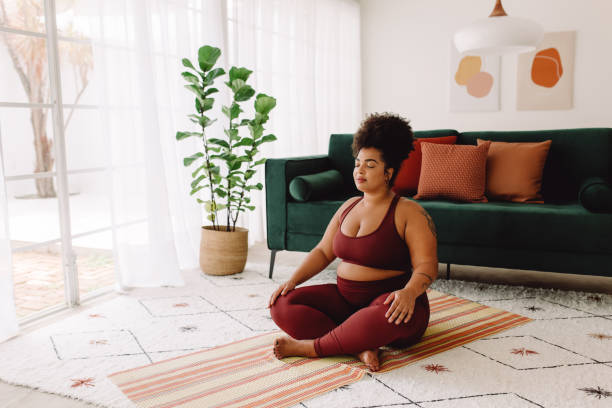Exactly How to Meditate: A Step-by-Step Method to Getting Mindfulness and Calm
Reflection offers as an effective tool for achieving mindfulness and psychological calmness in a fast-paced world. By understanding the fundamental principles and techniques involved in reflection, people can grow a method that enhances their overall well-being.
Recognizing Meditation
Comprehending meditation involves grasping its fundamental principles and techniques, which function as the foundation for the technique. At its core, reflection is a psychological workout intended at advertising leisure, developing internal energy, and developing empathy and understanding. The technique urges individuals to concentrate their interest, frequently with techniques such as deep breathing, visualization, or rule repetition.
Reflection can be classified into numerous styles, including mindfulness, transcendental, and loving-kindness meditation, each with unique objectives and methodologies. Mindfulness meditation highlights present-moment recognition and non-judgmental observation of ideas and feelings, while copyright involves making use of certain mantras to transcend regular mind. Loving-kindness reflection concentrates on creating an attitude of love and concern in the direction of oneself and others.
Despite the method utilized, the primary objective stays regular: to cultivate a deeper understanding of the mind and its patterns. This self-awareness cultivates psychological durability, quality of idea, and an extensive feeling of calmness (How to meditate?). By recognizing these principles and strategies, people prepared for an effective meditation technique that can dramatically boost their overall well-being
Getting Ready For Your Technique
Prior to beginning your reflection practice, it is necessary to create an atmosphere favorable to focus and relaxation. Make certain that the area is tidy and complimentary of clutter, as a neat environment can assist remove the mind.
Consider the lighting, as natural light can improve your state of mind and power. Soft, warm lights is commonly much more calming than severe fluorescent lights. Additionally, choose a comfy temperature, guaranteeing that you are neither also warm nor as well cool.
Integrating elements that advertise tranquility can further boost your experience. This might consist of soft paddings or coverings for comfort, along with soothing fragrances from vital oils or incense. It can likewise be valuable to have a timer set for your reflection session to stop disturbances from clock-watching.
Fundamental Meditation Methods
Another reliable strategy is body check reflection. This includes psychologically checking your body from head to toe, seeing any type of locations of stress or discomfort and knowingly loosening up those muscular tissues. This method fosters a much deeper connection in between your mind and body.

Lastly, loving-kindness meditation concentrates on cultivating compassion towards yourself and Go Here others. Quietly repeat expressions of a good reputation, improving psychological health and interconnectedness. Each of these strategies functions as a structure for your reflection journey, permitting you to locate the approach that reverberates finest with your individual method.
Preserving Focus and Mindfulness

Establishing a committed meditation room can improve the capability to keep mindfulness. A peaceful, uncluttered atmosphere lessens disturbances, allowing for much deeper immersion in the technique. Additionally, establishing a time frame can help manage expectations; beginning with much shorter sessions might reduce the shift into longer practices.
Using techniques such as body scanning or observing feelings can additionally boost mindfulness. These techniques motivate professionals to remain present and engaged with their physicality, anchoring their focus in the minute. Normal practice is essential; the mind constructs resilience in time, producing a stronger ability for focus.
Incorporating Reflection Into Day-to-day Live
Incorporating reflection right into every day life can transform regular activities right into chances for mindfulness and self-reflection. By incorporating mindfulness practices into common jobs, people can grow a better feeling of visibility and harmony amidst the busyness of daily life.
Begin by determining minutes throughout your day where you can stop briefly and practice mindfulness. During your early morning commute, emphasis on your breath or the sensations of the atmosphere around you. In the kitchen, technique food preparation as a meditative method, appreciating the appearances, colors, and aromas of the ingredients. Even ordinary activities like walking or cleaning dishes can come to be chances for meditation by directing your attention to the experiences of activity and the audios surrounding you.
Additionally, reserving committed times for reflection can enhance its practice. Start with brief sessions, gradually raising period as you become extra comfy. Usage tips or signs-- like a certain time of day or a soothing audio-- to develop consistency.
Eventually, the objective is to weave mindfulness into the fabric of day-to-day life, look at here now allowing you to come close to each moment with objective, thus enhancing your total sense of health and clearness.
Conclusion
In verdict, effective reflection requires a silent atmosphere, a comfy position, and a focus on the breath. Normal meditation, even in quick sessions, promotes a deeper link to the existing moment, eventually leading to higher calmness and mental clarity in day-to-day life.
Meditation can be classified into various styles, consisting of mindfulness, transcendental, and loving-kindness meditation, each with distinctive purposes and methodologies. Mindfulness reflection highlights present-moment understanding and non-judgmental monitoring of feelings and ideas, while transcendental reflection involves the usage of specific rules to transcend normal thought procedures.With your reflection area prepared, it's time to discover different basic reflection techniques that can assist grow mindfulness and internal tranquility.Regularly maintaining focus and mindfulness throughout reflection can be tough, especially for those new to the technique.Establishing a specialized meditation space can boost the capacity to preserve mindfulness.